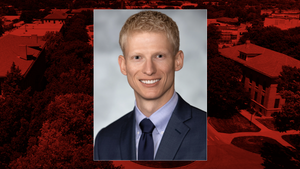Social media holds opportunity for Extension specialists 11492
The use of social media in public engagement and extension is a relatively new phenomenon, but scientists are starting to cautiously use it.
July 13, 2015

The use of social media in public engagement and extension is a relatively new phenomenon, and many scientists are cautious about using it professionally, University of California-Davis researcher Alison Van Eenennaam explained during the Extension Education Symposium at the 2015 JAM.
Social media provides opportunities to reach a much wider public audience than traditional extension meetings, but it may not always be the best approach to reach more traditional agricultural clientele who typically are an older demographic, noted Van Eenennaam. She said one issue with the professional use of social media is the difficulty of objectively documenting impact.
Although the number of followers or page views is an easy metric to report, it does not really evaluate impact. Merit and promotion evaluation systems will need to evolve to reflect the increased use of social media in extension programs, and appropriately reward academics for time spent effectively using these forms of communication.
The University of California-Davis Animal Biotechnology & Genomics Extension program incorporates the use of social media including websites, You-Tube educational videos and the use of Twitter, said Van Eenennaam.For extension work in controversial areas, she said, educators need to be prepared for the unpredictable nature of social media audiences. Several high-profile “public shamings” following an ill-advised tweet provide cautionary case studies of one of the risks of using social media, especially when discussing controversial topics.
Although Twitter is useful for directing interested followers to a website or alerting them to an upcoming meeting, it is difficult to explain the nuances of complex topics in 140 characters, and maintaining a civil and respectful dialog can sometimes be challenging, Van Eenennaam said.
Extension educators can certainly benefit from the expansive reach of social media and magnify the reach of their programs, and the next generation of educators will likely increasingly do so in the future. As with all extension communication, Van Eenennaam said, great care should be given to wording to ensure the professional dissemination of science-based information using social media.
You May Also Like



